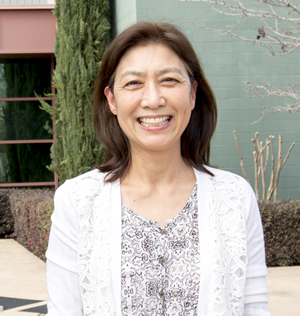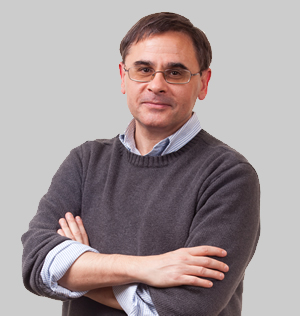NIF & PS People - 2017
May
NIF Researchers Honored
Two LLNL researchers who work with NIF have been named Distinguished Members of Technical Staff (DMTS) for their extraordinary scientific and technical contributions to the Laboratory and its missions, as acknowledged by their professional peers and the larger community.
Hye-Sook Park of the NIF and Photon Science Directorate and Bob Deri of the Engineering Directorate have earned the DMTS designation by reaching the highest technical staff level achievable by a scientist or engineer at the Lab. They join two other LLNL researchers, Rick Ryerson of the Physical and Life Science Directorate and Frank Graziani of the Weapons and Complex Integration Directorate, as this year’s DMTS honorees.
 Hye-Sook Park
Hye-Sook Park The DMTS classification, created to serve as a career ladder for LLNL scientists and engineers, appropriately recognizes science, technology and engineering (ST&E) excellence with distinction and compensation while allowing the honored recipients to remain focused on delivering ST&E solutions to critical mission areas of the Laboratory. Only a limited number of scientists and engineers are selected for DMTS recognition; following the practices of other laboratories and industry, Lawrence Livermore expects its DMTS population to remain within 2 to 3 percent of the eligible pool of scientists and engineers.
Hye-Sook Park joined LLNL as a postdoc in 1987 and became a staff scientist in the Physics Directorate in 1989. In 2002 she joined the NIF & PS Directorate, where she began using ultra-intense lasers to generate bright high-energy x-ray sources and developed techniques to probe matter at extreme density and temperature on high-power, laser-driven experiments.
In a short time she became recognized as a world authority in the use of petawatt-class lasers to generate high-energy x-ray sources for radiographically probing dense matter with picosecond (trillionth of a second) resolution. The techniques she developed are now in use at essentially all high-power laser facilities around the world.
Park’s other experiments have broadened the reach of the field of plasma physics into regions deep in planetary interiors and aspects of extreme states of solid-state material dynamics. She also helped develop the Irvine-Michigan-Brookhaven detector to look for proton decay and neutrinos; detectors, hardware and software of the MACHO (Massive Astrophysical Compact Halo Object) project to look for dark matter; detectors and software for the Clementine mission to map the lunar surface; and the Gamma-Ray Optical Counterpart Search Experiment for observing gamma-ray bursts. She also was a key member of the team that discovered the burst of neutrinos from Supernova 1987A.
“I am honored and I am humbled by this recognition,” Park said. “LLNL is a unique place where so much cutting-edge science is carried out. I’ve been very fortunate to work on many interesting projects here at LLNL, from astrophysics to plasma physics and material science. With support from management and my colleagues, I have enjoyed the privilege of discovering previously unseen physics. I am sure LLNL will continue supporting great science.”
 Bob Deri
Bob Deri Bob Deri’s technical scope spans fields such as photonic devices, micro-fabrication, communications systems and interconnects, integrated electronics, hardware, large laser systems and microwave diagnostics. He has continuously demonstrated technical leadership, bringing teams to success in efforts ranging from leading proposal teams for projects like UltraPERL and Visibuilding to his current role leading critical laser development at NIF.
Deri’s technical accomplishments have been recognized by the technical community with his election as an IEEE fellow, his receipt of three R&D 100 awards, and the publication of 91 papers. He also is co-inventor on 24 patents, with 11 pending, in the optoelectronics and laser optics fields.
Before starting at the Lab in 1992, Deri worked at Bellcore in the area of photonic devices where he researched and invented multiple devices. He left the Lab from 1999 to 2005 when he served as chief optical scientist at Terrawave. After returning to LLNL in 2005 he served in several critical technical leadership roles. He currently is the NIF & PS chief technologist, leading a team designing large diode-pumped solid state lasers.
“I’m extremely honored to have been selected for this award, and appreciate this recognition of my work,” Deri said. “Any success I’ve had over the years has been due to the support and guidance of many colleagues, and to the opportunity to participate in important, challenging projects at LLNL, for which I am grateful.”



